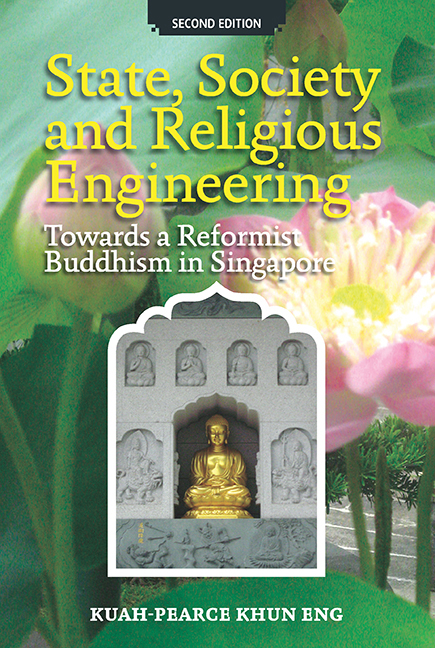Book contents
- Frontmatter
- Contents
- List of Diagrams
- Note on Romanisation
- Preface to the Second Edition
- Acknowledgements to the Second Edition
- Introduction
- PART 1 INVENTING A RELIGIOUS TRADITION
- PART 2 STATE, SOCIETY AND RELIGIOUS ENGINEERING
- 3 Bureaucratising the Temple and the Sangha
- 4 Establishing an Ethno-Religious Framework and the Religious Law
- 5 Buddhist Welfare and Charity
- 6 Experimenting with Religious Values as Asian Values
- PART 3 TOWARDS A REFORMIST BUDDHISM
- Conclusion
- Postscript to the Second Edition: Towards a Humanist and Socially-engaged Buddhism
- Glossary
- Bibliography
- Index
5 - Buddhist Welfare and Charity
from PART 2 - STATE, SOCIETY AND RELIGIOUS ENGINEERING
Published online by Cambridge University Press: 21 October 2015
- Frontmatter
- Contents
- List of Diagrams
- Note on Romanisation
- Preface to the Second Edition
- Acknowledgements to the Second Edition
- Introduction
- PART 1 INVENTING A RELIGIOUS TRADITION
- PART 2 STATE, SOCIETY AND RELIGIOUS ENGINEERING
- 3 Bureaucratising the Temple and the Sangha
- 4 Establishing an Ethno-Religious Framework and the Religious Law
- 5 Buddhist Welfare and Charity
- 6 Experimenting with Religious Values as Asian Values
- PART 3 TOWARDS A REFORMIST BUDDHISM
- Conclusion
- Postscript to the Second Edition: Towards a Humanist and Socially-engaged Buddhism
- Glossary
- Bibliography
- Index
Summary
INTRODUCTION
By separating the temple institution from the Sangha, the roles of the temple and the Sangha are now clearly defined. As a religious bureaucracy, the temple is now free to conduct both religious and secular activities within the legal confines. Today, the Buddhist temples are regarded as important providers of welfare services.
This chapter will explore how the temple takes on welfare roles and becomes an important welfare and benevolence provider. The cultural politics of religion is such that while the temple sees its welfare roles as strictly belonging to the moral dictum of its teachings, the State sees the temple as a legitimate space where the group of temple-goers can be convinced to take on the welfare roles. Through a series of Land Law and planning policies, the state indirectly transforms the role of the temple into an important welfare provider. In this sense, the religious space is partially turned into secular space for the less-privileged groups of people within Singapore society. The temple can thus be seen as a champion of the underclass, and it assumes moral authority over the citizens, albeit under the directive of the Singapore state.
TEMPLES AND DEVELOPMENT
Big and small Chinese temples of Buddhist, Buddhist-Shenist and Shenist origin are scattered throughout the island. It is possible to identify the temples according to their physical structures. A typical Chinese temple has an ornate brightly-painted tiled roof with upward-curving eaves. The temple is usually free standing, surrounded by a compound. A main shrine hall dominates the interior of the temple, housing the main deity and a pantheon of lesser deities. The back portion of the building is the kitchen area where food is prepared and religious paraphernalia is stored for use within the temple. Usually the temple has an upper floor that forms the private quarters of the monk, nuns and priests.
The main shrine hall and the adjoining shrine halls are public areas of worship. Any devotee or worshipper can enter and worship. The door to the temple is open during the day, every day, throughout the year. As long as they do not disrupt the tranquil environment, devotees or worshippers can stay in the shrine hall as long as they wish to pray, meditate or do nothing.
- Type
- Chapter
- Information
- State, Society and Religious EngineeringTowards a Reformist Buddhism in Singapore (Second Edition), pp. 167 - 194Publisher: ISEAS–Yusof Ishak InstitutePrint publication year: 2009



